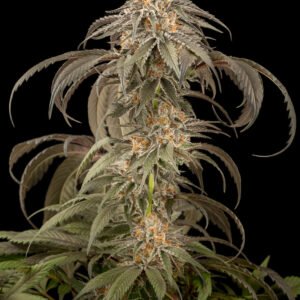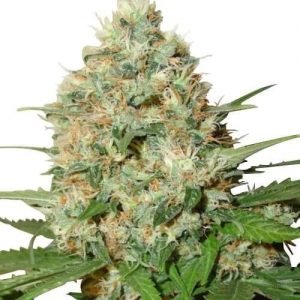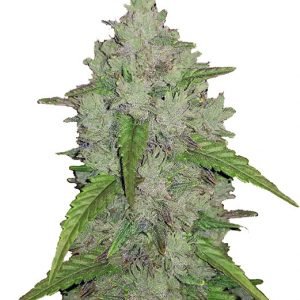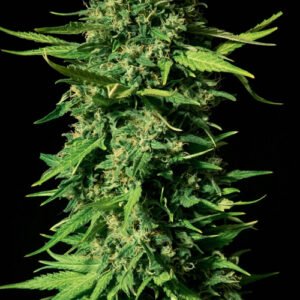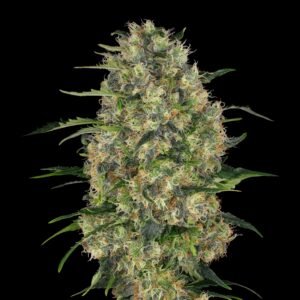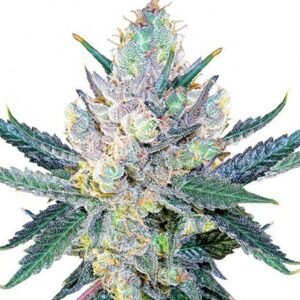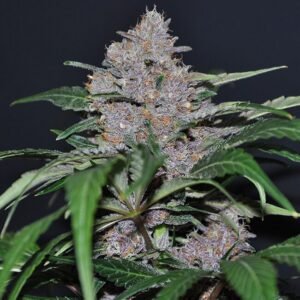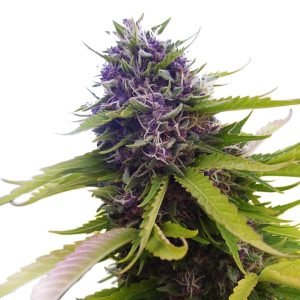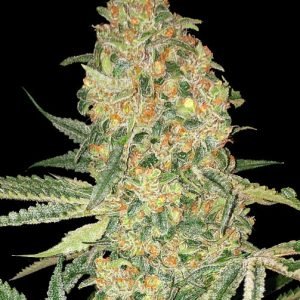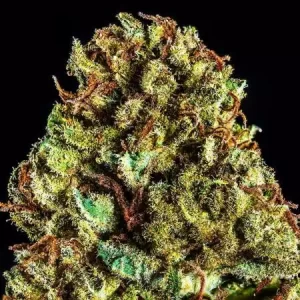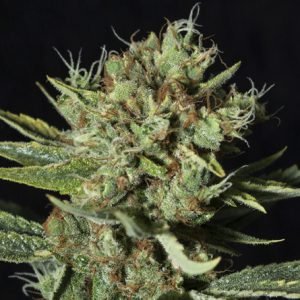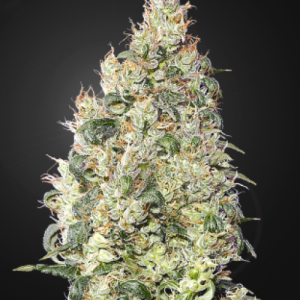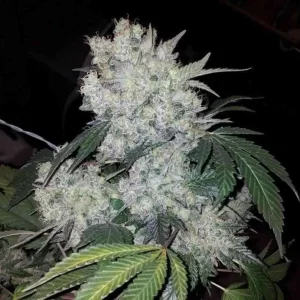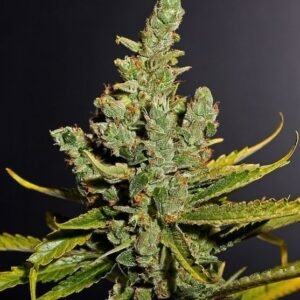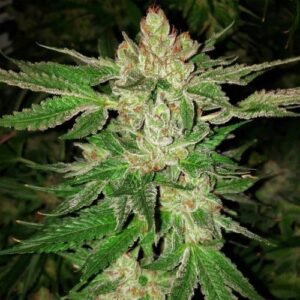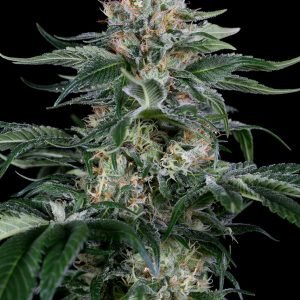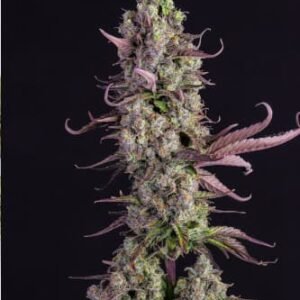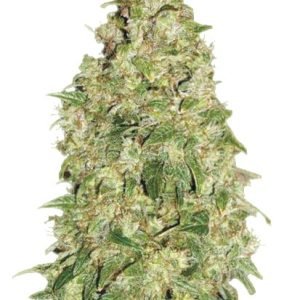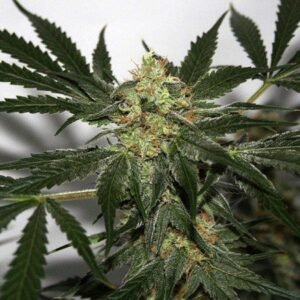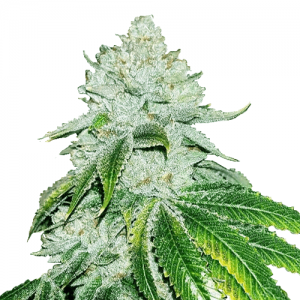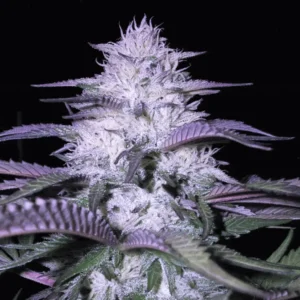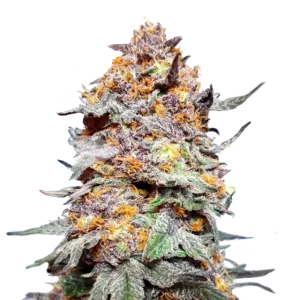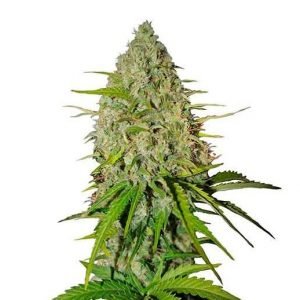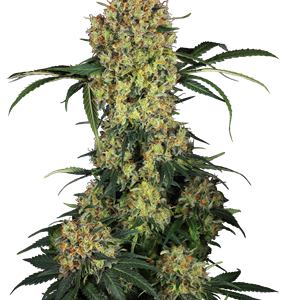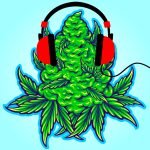
Cannabis Music Culture Leave a comment
Are you a musician searching for a fresh avenue to channel your creativity and innovation, yet unsure about where to begin? Have you ever contemplated incorporating cannabis into your musical journey but remain uncertain about the potential outcomes or its effectiveness? Chances are, if you’ve ever indulged in cannabis, you’ve likely done so while immersing yourself in music, and you’ve likely noticed that the two activities complement each other quite harmoniously. But why is that the case? What is it about cannabis and music that forms such a harmonious connection? In this post, we will delve into the relationship between cannabis and music, addressing some of these questions. We will also explore anecdotal experiences and scientific research conducted on this topic. So, whether you’re a cannabis enthusiast or simply intrigued by this subject, read on to discover more!
Marijuana has had a significant presence in music genres such as psychedelic rock and reggae, even predating its integration into mainstream culture. Although historically associated with stigma, the legal landscape surrounding cannabis has evolved, with decriminalization and legalization becoming more prevalent across the country. As a result, recreational cannabis use is no longer met with the same level of scrutiny it once was. While marijuana, like any substance, carries the potential for dependency and misuse, it is often celebrated for its euphoric and stimulating psychoactive effects. These effects have served as a muse for musicians throughout history, elevating their musical creativity and expression.
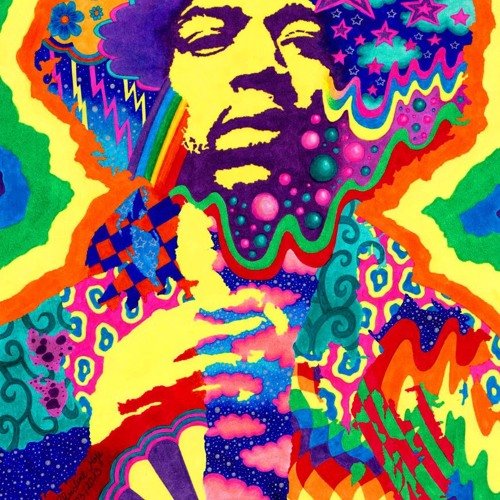
The Historical Link Between Cannabis and Music
The intertwining history of music and cannabis stretches back long before cannabis gained legal status, whether for recreational or medicinal purposes. The 1960s marked a pinnacle of cannabis culture’s influence on music and music creation, with iconic musicians like The Beatles, Bob Dylan, Jimi Hendrix, and Willie Nelson, among others, embracing it. Recently, it seems like nearly every celebrity is endorsing various cannabis products, from CBD oil to vape pens and actual buds, openly sharing their cannabis habits. Some argue that this reflects the plant’s increasing acceptance in mainstream culture, a notion not far from reality. Cannabis acceptance is on the rise daily, with cannabis products more accessible than ever before. Within the realm of music creation, cannabis use has always had a profound connection because of the transformative impact it can have on the creative experience. It not only enhances musicians’ efficiency in their work but also fosters new dimensions of creativity and innovation.

The Beatles

Bob Dylan

Jimi Hendrix

Willie Nelson
How Cannabis can Spark our Creativity
Indulging in cannabis and immersing oneself in music is a commonly portrayed image of a cannabis enthusiast, and for good reason – it’s an experience that can significantly enhance the way you perceive and enjoy music. It goes beyond simply hearing a beat and melody; cannabis can transform your auditory experience, allowing you to appreciate music on a deeper level.
However, cannabis doesn’t just enrich the listening experience; it also has a profound impact on the creative process, particularly in music creation. Cannabis has the ability to alter your perception of various elements, including sound pitch, time, and even movement. This combination of effects creates an entirely new realm of experience while you remain firmly grounded in the familiar world.
Cannabis has the potential to influence the creative process, serving as a valuable tool for overcoming creative blocks and sparking innovative ideas. Heightened senses and a slowed perception of time open doors to new details and nuances, enriching your creative journey and broadening your horizons.
Recent findings from brain mapping reveal heightened activity in the parietal region and the right hemisphere of the brain when comparing responses to the same song before and after cannabis use. The parietal area plays a crucial role in information processing, and increased activity within it is associated with more effective problem-solving. Similarly, the right hemisphere is linked to creativity, intuition, imagination, and other creative faculties. Cannabis facilitates a deep immersion in the creative process, enhancing the enjoyment of activities such as listening to and creating music. We will get more into the synergistic effects of Cannabis and Music on the brain later but first we have listed some top historical songs made by commonly known ‘Weed Smokers’.
If you are interested in Cannabis Seeds, Click Here for our recommended seed banks. All the information is provided there.


Historical Songs
The Beatles – Got to get you in my life
Bob Marley – Kaya
Snoop Dogg – Gin and Juice
Exploring the Interplay of Cannabis and Music on Brain Function
To delve into the fascinating relationship between music and cannabis on brain function, it is essential to first compare their respective impacts. Michael Thaut, a distinguished professor specializing in music and neurology at the University of Toronto, holds a Master’s and PhD in Music from Michigan State. His extensive research has centered on unraveling the neural and psychophysical underpinnings of music and rhythm perception.
Thaut’s investigations have revealed that music processing engages the entire central nervous system, from the spinal cord to the cortex. Intriguingly, the central nervous system is replete with cannabinoid receptors, particularly the CB1 receptors known for modulating mood and sensation. Furthermore, both music and cannabis activate the mesolimbic dopamine system, colloquially referred to as the brain’s reward pathway. This system releases dopamine as a chemical reinforcement of pleasurable behaviors. Consequently, music, whether experienced with or without the influence of cannabis, amplifies activity within this brain region. It is thus logical that people find music enjoyable in a sober state but often derive even greater pleasure from it when under the influence of cannabis.
An electroencephalogram (EEG) study, designed to measure the brain’s electrical activity, has shed light on the effects of cannabis consumption. This study has unveiled increased activity in two critical brain regions: the parietal area and the right hemisphere. The parietal area is responsible for information processing, while the right hemisphere is closely linked to creativity, imagination, and intuition. Elevated activity in both these regions following cannabis consumption suggests that cannabis enhances individuals’ ability to process auditory stimuli and fully immerse themselves in the creative aspects of both listening to and creating music.
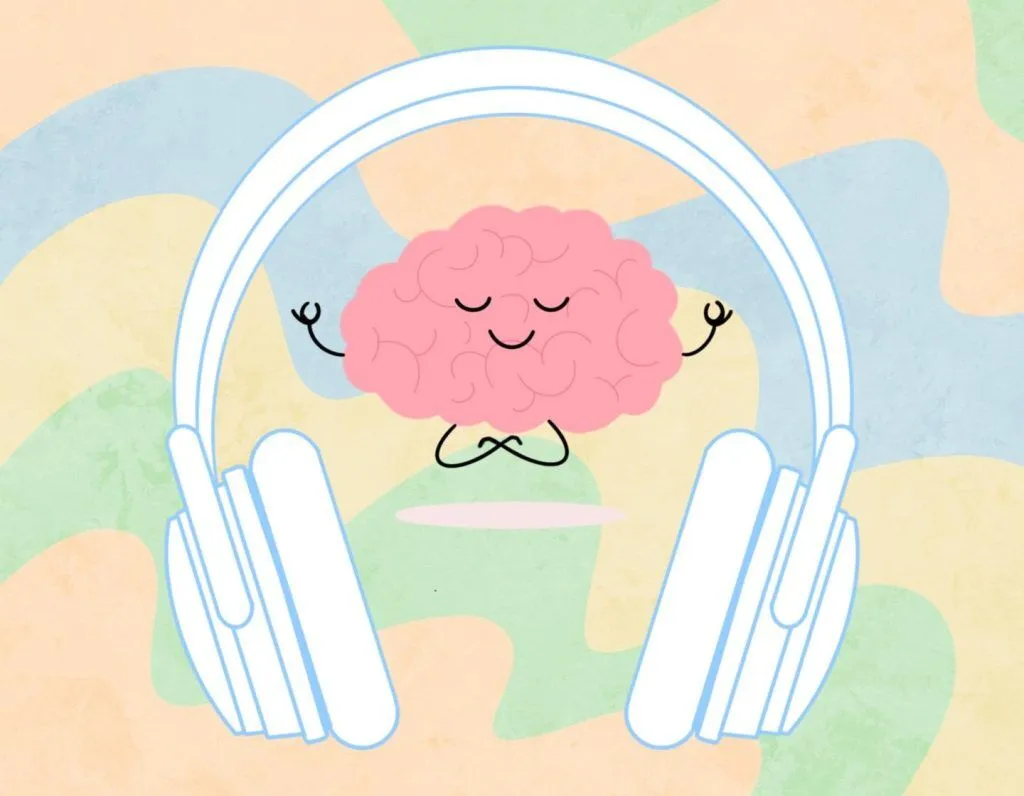

The Influence of Cannabis on Modern Music Today
In today’s music landscape, the presence of cannabis is evident across a wide spectrum, spanning from mellow indie pop to gritty SoundCloud trap. Over the past decade, artists of diverse genres, such as Lana Del Rey with “High by the Beach,” Bruno Mars in “Smokin’ out the Window,” and Future’s “Drankin n Smokin,” have all made implicit or explicit references to cannabis in their songs. The perception of weed has evolved beyond its historical associations with hippie and Black culture. It’s doubtful that contemporary college students view smoking weed as the rebellious act it once symbolized. One could even argue that weed culture has achieved mainstream status, owing to its widespread adoption by white musicians.
Lana Del Ray – High by the Beach
Bruno Mars – Smokin Out the Window
Cannabis vs Other Drugs - A Comparrison
It is intriguing to examine how marijuana’s portrayal and role in music differ from that of other substances, notably alcohol, which is often so pervasive in media that it is not always categorized as a drug. Alcohol tends to align more seamlessly with higher-energy music genres. Anecdotally, it complements the repetitive and driving rhythms of electronic dance music better than the dreamy soundscapes of psychedelic rock or the smooth grooves of rhythm and blues.
In contemporary hip-hop, recurring references to drug use often juxtapose marijuana with substances like MDMA and cocaine, further blurring the lines and diminishing the distinction regarding the relatively lower potential harm of marijuana. However, it’s worth noting that the easily accessible psychoactive properties of marijuana also position it as a significant influencer within the realm of psychedelic music. This umbrella encompasses diverse genres such as acid jazz, chillwave, hypnagogic pop, psychedelic rock, psytrance, and trip-hop.
Studies
In 1971, psychologist Charles Tart conducted a study examining the effects of cannabis. He gathered 150 cannabis users over several months, provided them with cannabis, and instructed them to consume their usual amount. Afterward, he administered psychological tests and asked them to articulate their experiences with the drug at various stages. These findings were later published in Tart’s influential work, “On Being Stoned.”
Within the data collected, there were notable effects related to the perception of music and sound. Mildly stoned participants reported a heightened sensitivity, describing a “more subtle quality” in sound. As they became moderately stoned, they noted an enhanced understanding of song lyrics. When strongly stoned, they could perceive greater spatial separation between sounds while listening to music. These precise and almost technical effects not only shed light on the nuances of the cannabis experience but also highlight the heightened sensitivities necessary in music production and performance. The latter effect, in particular, points to the characteristics often found in music styles associated with cannabis use, with dub reggae being a prominent example.
Additionally, cannabis yields physical effects that resonate with musicians, especially drummers and percussionists. Its relaxation properties assist in maintaining steady timekeeping, particularly when performing rhythmic patterns in cycles. The impact on memory and learning can help individuals settle into a musical groove, favoring familiarity over exploration of new ideas and materials. Even experienced cannabis users may experience this looping effect, especially when reading.
Furthermore, cannabis’s relaxing influence contributes to what one of my friends, who lived in Amsterdam, once referred to as the “look” of stoned individuals—detectable from a distance. This effect on posture and movement appears to aid musicians who emphasize cyclic and rhythmic elements in their music.
Afghan Kush Feminized
10% Sativa, 90% Indica | THC 21% | Afghan Kush is an Indica cannabis strain originating from the renowned Hindu Kush mountain range, which stretches along the Afghan-Pakistan border. It is celebrated for its quintessential indica characteristics, producing large, resinous buds that deliver the classic body stone effect cherished by many users.
——————————————————————————
Is it legal to buy Cannabis seeds in Australia?
How can I buy Cannabis seeds in Australia?
AK-47 Feminized
Ak-47 was orginally created by the Netherland’s Serious Seeds in 1992 and has won 16 awards including the High Times Cannabis Cup. People love this strain around the world for its high THC content, strong flavour and high energy effects.
——————————————————————————
Is it legal to buy Cannabis seeds in Australia?
How can I buy Cannabis seeds in Australia?
Amnesia Haze Feminized
10% Indica – 90% Sativa | THC 21-25% | This is THE legit Dutch classic Sativa dominent powerhouse that is the proud winner of multiple Cannabis cups. This uplifter has a lemony, incense and cederwood flavour. Amnesia has a slightly longer growth phase overall, but this translates into massive yields and is well worth your attention for a truly supreme quality end product that is sure to please those aiming for a happy and uplifting high.
——————————————————————————
Is it legal to buy Cannabis seeds in Australia?
How can I buy Cannabis seeds in Australia?
Amnesia Platinum Feminized
70% Sativa, 30% Indica | THC 16 – 20% | The Original Amnesia Platinum was developed by a Dutch breeder who combined a renowned Haze female with a Northern Lights male. Due to its great success and high demand, the breeder has now released the first Original Amnesia Platinum Feminised seeds. This Sativa variety, which flowers like an Indica, grows rapidly, is highly productive and maintains a manageable height. The plants are extremely potent, boast an exceptionally sweet Haze aroma, and are covered in abundant resin crystals.
——————————————————————————
Is it legal to buy Cannabis seeds in Australia?
How can I buy Cannabis seeds in Australia?
Banana Monkey Feminized Seeds
30% Sativa, 70% Indica | THC 25-28% | Our Banana Monkey has an aroma of ripe bananas and fruity spice when you open the jar and a flavor profile that lives up to its name. Banana Monkey is tranquilizing and a bit of a creeper, as it slowly yet unrelentingly produces a deep whole-body relaxation thanks to the strong Indica influence. You’ll find your mind lifted into a state of happiness that has you feeling free of any bad moods or negative thoughts.
——————————————————————————
Is it legal to buy Cannabis seeds in Australia?
How can I buy Cannabis seeds in Australia?
Blak Domina Feminized
10% Sativa, 90% Indica | THC 20% | Black Domina is an Indica marijuana strain created by combining Northern Lights, Ortega, Hash Plant, and Afghani. This diverse blend produces deeply relaxing and sedative effects. Black Domina is known for its spicy pepper aroma and flavor, making it a popular choice among medical marijuana patients seeking relief from insomnia.
——————————————————————————
Is it legal to buy Cannabis seeds in Australia?
How can I buy Cannabis seeds in Australia?
Blue Cheese
40% Sativa, 60% Indica | THC 19% | Blue Cheese is an Indica strain created by crossing a Blueberry male with a female U.K. Cheese, a phenotype of Skunk #1. This combination results in a unique flavor profile that blends the sweet taste of berries with the savory notes of blue cheese, reminiscent of the original Cheese strain. Blue Cheese’s potent effects are perfect for unwinding after a long day, offering relief from muscle spasms, pain, and stress.
——————————————————————————
Is it legal to buy Cannabis seeds in Australia?
How can I buy Cannabis seeds in Australia?
Blue Dream
70% Sativa, 30% Indica | THC 19% | Blue Dream is a Sativa-dominant hybrid cannabis strain created by crossing Blueberry with Haze. Known for its balanced high, this strain offers both cerebral stimulation and full-body relaxation. With a THC content of 18% and low CBD levels, Blue Dream is popular among both beginners and experienced users. Its flavor profile is reminiscent of sweet berries, both in taste and aroma. Medical marijuana patients frequently choose Blue Dream to alleviate symptoms of depression, chronic pain, and nausea.
——————————————————————————
Is it legal to buy Cannabis seeds in Australia?
How can I buy Cannabis seeds in Australia?
Blueberry Feminized
70% Indica – 10% Sativa – 20% Ruderalis | THC 19-20% | This berry-tasted strain is a cross between Afghani Indica x Highland Thai Sativa x Purple Thai Sativa. This strain promotes calmness and ease and is great for combating anxiety and stress.
How can I buy Cannabis seeds in Australia?
Bruce Banner Feminized
25% Indica – 55% Sativa – 20% Ruderalis | THC 23% | This strain is followed by a cult over the years. It is loved for its distinct earthy, woody flavor with a sweet strawberry undertone. It is great for an energizing, motivational high filled with creativity and warmth. This plant is medium-sized and grows well indoors and outdoors.
——————————————————————————
Is it legal to buy Cannabis seeds in Australia?
How can I buy Cannabis seeds in Australia?
Bubblegum Feminized
80% Indica – 20% Sativa | THC 20 – 27% | This strain has large bubbly buds with a powerful high that offers great emotional and physical relief. This fruitful strain offers flavors of bubblegum, fruits, spices, bitterness, and earthiness.
——————————————————————————
Is it legal to buy Cannabis seeds in Australia?
How can I buy Cannabis seeds in Australia?
Caramel King Feminized
75% Indica – 5% Sativa | THC 20%
This exciting strain converges a cocktail of the top indica strains we all know and love today: Blue Black x Maple Leaf Indica x White Rhino. Auto Caramel King has a sweet flavor and aroma, with notes of caramel.
It is a fast hitter and has a very relaxing body-stoned effect. Brain activity will increase along with a relaxing body effect that isn’t too heavy, still allowing movement and mobility. Making this perfect for a good laugh with your friends at Saturday’s barbecue. Medicinally she is highly valued for her antidepressant and anxiolytic properties.
——————————————————————————
Is it legal to buy Cannabis seeds in Australia?
How can I buy Cannabis seeds in Australia?
CBD Cheese Feminized
60% Indica – 40% Sativa | THC 0.50% | CBD 15 – 17% | This legendary strain has an intense aroma of old cheese and an earthy, mossy taste, with hints of flowers. CBD Cheese delivers a moderately potent and long-lasting high, with a very nice sensation of well-being and happiness. Due to high CBD levels, this strain showcases many anxiolytic and anti-inflammatory properties and is great for medical use.
——————————————————————————
Is it legal to buy Cannabis seeds in Australia?
How can I buy Cannabis seeds in Australia?
CBD Gold Feminized
THC 4 – 6% | CBD 7 -10% | This strain is a medicinal Indica dominant plant that is extremely pleasant and aromatic. It provides a powerful, long-lasting body high that is perfect for relaxing.
——————————————————————————
Is it legal to buy Cannabis seeds in Australia?
How can I buy Cannabis seeds in Australia?
CBD Indica King Feminized
80% Indica – 20% Sativa | THC 0.70 – 0.90% | CBD 20 – 24% | Our CBD Indica King Strain is top-quality and best known for its potent effects and relaxing properties. This unique strain packs the right ratio of a tangy grapefruit flavor with tasty fruit cocktail aromas. When Grown and harvested with care, this CBD flower is packed with beneficial cannabinoids, terpenes, and flavonoids that work together to deliver a truly satisfying relaxing body-stoned, long-lasting experience.
——————————————————————————
Is it legal to buy Cannabis seeds in Australia?
How can I buy Cannabis seeds in Australia?
CBD White Widow Feminized
THC 4 – 6% | CBD 7 -10% | This strain is a medicinal Indica dominant plant that is extremely pleasant and aromatic. It provides a powerful, long-lasting body high that is perfect for relaxing.
——————————————————————————
Is it legal to buy Cannabis seeds in Australia?
How can I buy Cannabis seeds in Australia?
Cheese Feminized
20% Sativa, 80% Indica | THC 18-20% | Cheese is a renowned strain that originated in the United Kingdom. It is a unique female phenotype of Skunk #1, which is a hybrid of Afghani (indica), Acapulco Gold (sativa), and Columbian Gold (sativa). This strain preserves the uplifting effects of a sativa, making it popular among those dealing with stress and anxiety. Its potent body relaxation helps alleviate chronic pain and is beneficial for treating insomnia. Additionally, Cheese is frequently used to stimulate appetite.
——————————————————————————
Is it legal to buy Cannabis seeds in Australia?
How can I buy Cannabis seeds in Australia?
Chronical Feminized
60% Sativa, 40% Indica | THC 19-25% | This strain is known for its impressive yields, thanks to its robust hybrid genetics—a blend of Northern Lights, Skunk x Northern Lights, and AK-47. With a medium height and a less branchy structure, it’s not ideal for topping or super cropping. However, it excels in a Sea of Green setup, allowing growers to concentrate on the main colas and maximize plant density in limited space. Chronical delivers astonishing yields, but proper curing is essential to preserve its delightful sweet aroma.
——————————————————————————
Is it legal to buy Cannabis seeds in Australia?
How can I buy Cannabis seeds in Australia?
Cocopopo Feminized
5% Indica – 75% Sativa – 20% Ruderalis | THC 20 – 25% | This exciting genetic combination is birthed from O.G. Chocolate x Cannalope Haze. It is easy to grow and takes less effort to maintain than other strains. Enjoy the sweet, bitter chocolate taste with Cocopopo.
——————————————————————————
Is it legal to buy Cannabis seeds in Australia?
How can I buy Cannabis seeds in Australia?
Coffee Rocket Feminized
70% Sativa, 30% Indica | THC 25-28% | Coffee Rocket has an earthy, yet sweet flavor and a nice citrusy aroma with a hint of grape. It has high THC. The wonderful Coffee Rocket strain has rapid effects but will provide nice relaxation of the muscles and creative energy along with slight euphoria. Coffee Rocket is versatile and can be smoked day or night.
——————————————————————————
Is it legal to buy Cannabis seeds in Australia?
How can I buy Cannabis seeds in Australia?
Dosidos Rocketos Feminized
30% Sativa, 70% Indica | THC 26 – 32% | Introducing your new green companion! This Indica-dominant strain is packed with THC and boasts an incredible taste and aroma. It’s versatile, thriving indoors with the Screen of Green technique or Super Cropping, and flourishing outdoors in sunlight. Plus, it’s resilient enough to withstand colder climates. Enjoy legendary potency and unique effects with this exceptional all-round variety!
——————————————————————————
Is it legal to buy Cannabis seeds in Australia?
How can I buy Cannabis seeds in Australia?
Dubai Poison Feminized
100% Sativa | THC 8-20% Dubai Poison has a really complex flavor and aroma, with notes of lemon and spices. The effect it provides is potent, clear, and cerebral. This legendary strain has gained popularity worldwide for it’s energetic, uplifting effects. Durban is the perfect strain to help you stay productive through a busy day when exploring the outdoors, or to help you get creative.
——————————————————————————
Is it legal to buy Cannabis seeds in Australia?
How can I buy Cannabis seeds in Australia?
Early Top Skunk Feminized
35% Sativa, 65% Indica | THC 15 – 20% | Feminised Early Top Skunk seeds combine Skunk #1 and Early Pearl, creating hardy outdoor plants with dense, resin-coated buds. Early Pearl makes these plants mold-resistant and triggers early flowering from late July to late September. Skunk #1 ensures a high-quality yield. Ideal for all growers, this strain is reliable, easy to grow, and consistently produces top-grade cannabis.
——————————————————————————
Is it legal to buy Cannabis seeds in Australia?
How can I buy Cannabis seeds in Australia?
Euforia Special Feminized
30% Sativa | 70% Indica | THC 18 – 20% | Euforia Special blooms with heavy flowers on long branches with short internodes. During the vegetative stage, some plants may resemble Haze varieties, but their Indica traits become prominent once flowering begins. The plants are robust and have earned a lasting reputation among dedicated growers worldwide.
——————————————————————————
Is it legal to buy Cannabis seeds in Australia?
How can I buy Cannabis seeds in Australia?
Gelato Feminized
70% Indica – 30% Sativa | THC 21-27% | This strain is an absoluate corker! One of the nicests strains going around in our opinion and very under rated. Super strong, Very crystally large(ish) buds with very big yields. It’s fairly straight forward to grow and super strong.
——————————————————————————
Is it legal to buy Cannabis seeds in Australia?
How can I buy Cannabis seeds in Australia?
Godfather OG Feminized
40% Sativa | 60% Indica | THC 19% | Godfather OG, also known as “Godfather,” “The Don of All OG’s,” and “OG Godfather,” is a powerful indica strain created by crossing XXX OG and Alpha OG. This strain delivers sedating and relaxing effects, making it ideal for medical marijuana patients seeking relief from insomnia and pain.
Flavor Profile Godfather OG has a spicy and kushy flavor with subtle grape undertones.
THC Levels and Usage With high THC levels around 28%, consumers with low THC tolerance should only use Godfather OG in small doses.
——————————————————————————
Is it legal to buy Cannabis seeds in Australia?
How can I buy Cannabis seeds in Australia?
Gorilla Glue Feminized
50% Indica – 50% Sativa | THC 20-26% | One of the strongest cannabis strains available this one is recommended for the serious marijuana consumer! This popular strain has also won several cannabis awards like the Michigan and Los Angeles Cannabis Cups in 2014, and the High Times Jamaican World Cup.
——————————————————————————
Is it legal to buy Cannabis seeds in Australia?
How can I buy Cannabis seeds in Australia?
Granddaddy Purple Feminized
25% Sativa | 75% Indica | THC 17% | Granddaddy Purple, also known as “Grand Daddy Purp,” “Granddaddy Purps,” “GDP,” and “Grandaddy Purple Kush,” is an indica strain popularized in 2003 by Ken Estes. A cross of Mendo Purps, Skunk, and Afghanistan, it boasts a complex grape and berry aroma from its Mendo Purps and Afghanistan parents and a compact bud structure from Skunk. Its deep purple flowers are coated in white crystal resin. GDP delivers strong mind and body effects, combining cerebral euphoria with physical relaxation. It’s often used to relieve pain, stress, insomnia, appetite loss, and muscle spasms. GDP yields large harvests, ready in about 60 days indoors.
——————————————————————————
Is it legal to buy Cannabis seeds in Australia?
How can I buy Cannabis seeds in Australia?
Grapefruit Feminized
20% Indica – 80% Sativa | THC 16-20%
The Vancouver, Canada staple…. This 80% Sativa strain has a sweet and fruity aroma similar to the smell of ripe grapefruit It’s an 80’s old secret mix of Cinderalla 99 with a mystical grapefruit flavoured Sativa.
With the smell of pineapple and grapefuit this has an uplifting & stimulating high good for focus, creativity and pleasure.
——————————————————————————
Is it legal to buy Cannabis seeds in Australia?
How can I buy Cannabis seeds in Australia?
Green Candy Feminized
40% Indica – 60% Sativa | THC 20-24% | Green Candy has an intensely fruity aroma and flavor, with notes of mango, pineapple, exotic wood, and incense. The effect is stimulating, focused, and energizing, providing a cerebrally powerful Sativa-like high. Only a few puffs of this potent beauty will allow your stress and anxiety to melt away along with waves of euphoria.
Is it legal to buy Cannabis seeds in Australia?
How can I buy Cannabis seeds in Australia?

About the Author
Our deep love of plants and fascination with Cannabis has enabled over 25 years of successful small scale Marijuana cultivation from indoor hydroponics, greenhouses and outdoor growing set-ups.
As Cannabis laws around the world change, *we support the movement toward freedom of choice for responsible, consenting adults who wish to experience the joy and wonder of growing a Cannabis plant.

